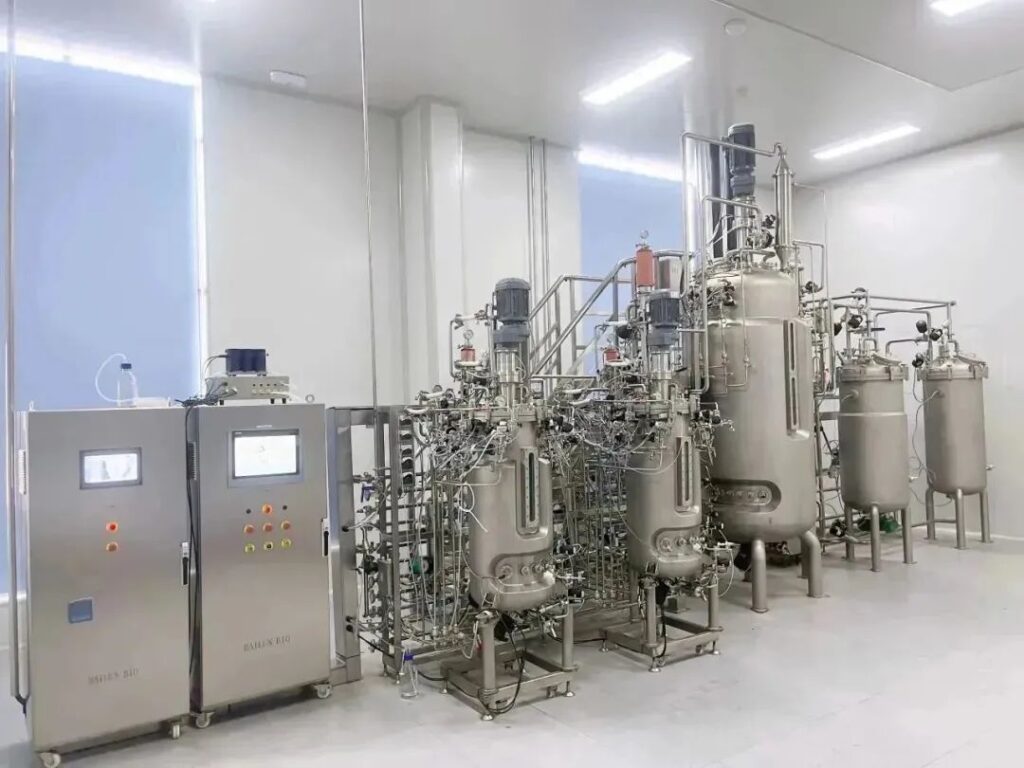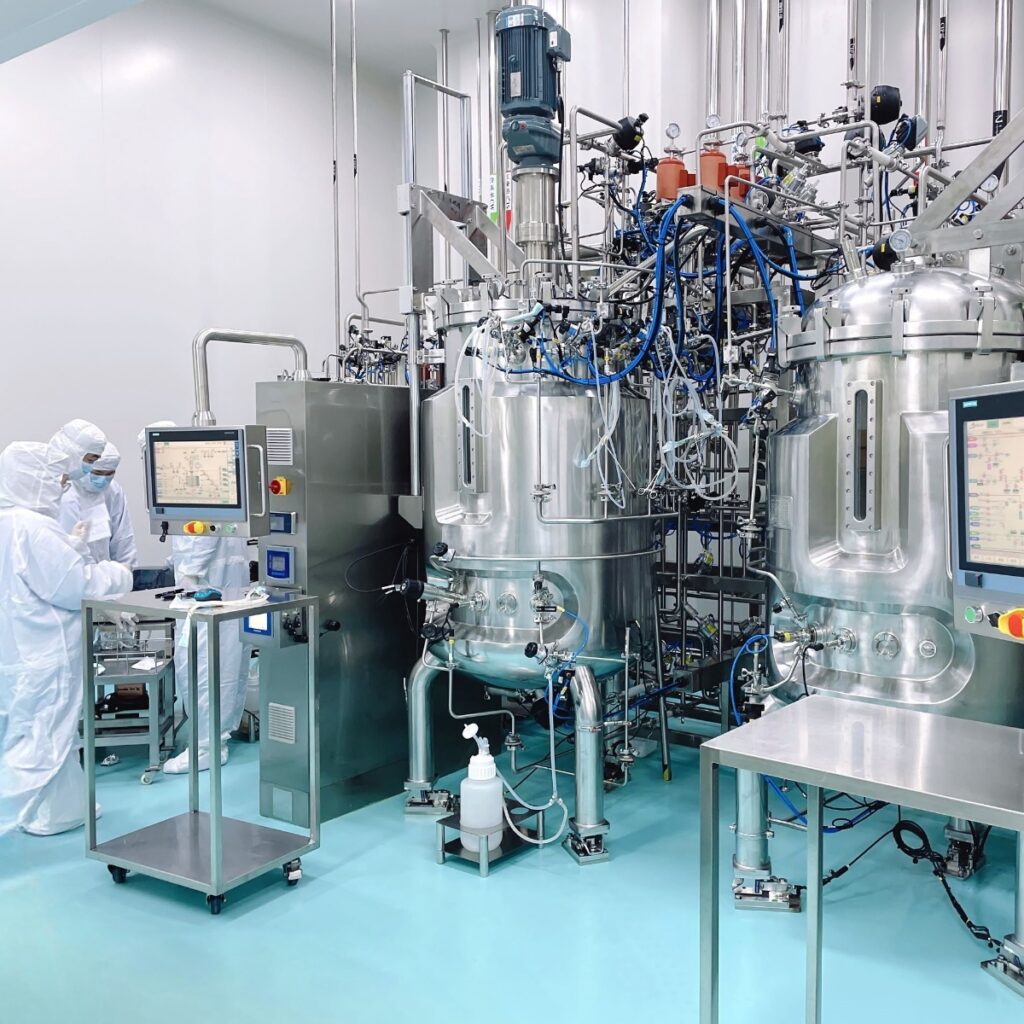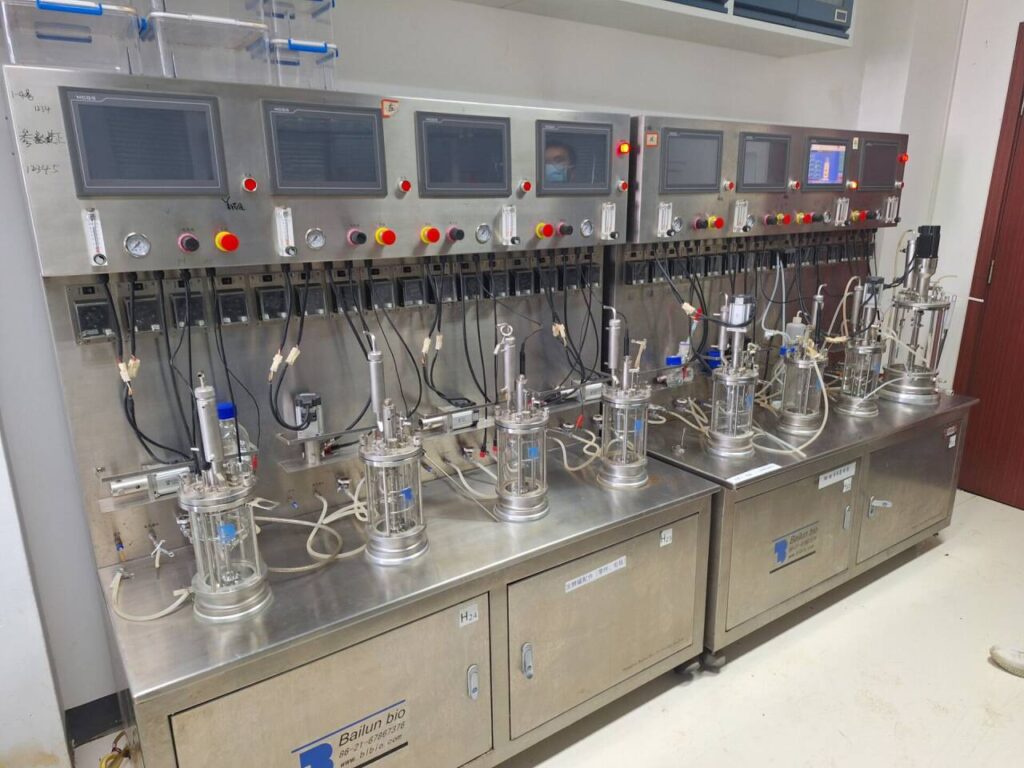A bioreactor can be described as a container like device that provides a stable environment for the reproduction of microorganisms and maintains a stable equilibrium during the biochemical processes carried out by these microorganisms to produce the required substances.

In biotechnology, a bioreactor refers to a device used for in vitro cultivation of microorganisms and cells, which obtains various target products and drugs through biochemical reactions or biological metabolism. Basically, everything involving cell metabolism and cell culture requires the involvement of bioreactors.There are various types of bioreactor from Bailun,such as stainless steel bioreactor,glass bioreactor,cell culture bioreactor.
Bioreactor: It is a device system, cell, tissue organ, etc. that utilizes the biological functions of organisms to obtain target products through biochemical reactions or biological metabolism in vitro or in vivo. A bioreactor in bioengineering is a device system that utilizes the biological functions of organisms (such as microorganisms, cells; microorganisms include bacteria, viruses, fungi, and a few algae, etc.) to conduct biochemical reactions in vitro. It is a type of biological function simulator, such as fermentation tanks, cell culture tanks, immobilized cell reactors, etc.
Bailun has multiple types of bioreactors, mainly including the following ones。
Types of Bioreactor for Bailun
1.Standard mechanical stirring bioreactor
Mechanical stirred bioreactors are made of two materials: glass and stainless steel. Mechanical stirred bioreactor is one of the most commonly used types in fermentation factories. It utilizes the function of a mechanical stirrer to thoroughly mix air and mash, promoting the dissolution of oxygen in the mash to ensure the supply of oxygen needed for microbial growth, fermentation, and metabolic products.
The main function of stirring is mixing and mass transfer. Even if the air introduced disperses bubbles and mixes them thoroughly with the fermentation broth, the bubbles are broken to increase the gas-liquid contact interface, obtain the required oxygen transfer rate, and suspend and disperse biological cells in the fermentation system to maintain appropriate gas-liquid solid three-phase mixing and mass transfer, while enhancing the heat transfer process.
2.Magnetic stirring bioreactor
Magnetic stirring bioreactors are also divided into two materials: glass and stainless steel. Magnetic stirring is a laboratory instrument that uses a magnetic stirrer for liquid mixing, mainly used for stirring or simultaneously heating and stirring low viscosity liquids or solid-liquid mixtures.
The basic principle is to use the principle of magnetic repulsion and attraction of magnetic fields, and use the magnetic field to push the magnetic stirrer placed in the container to rotate in a circular motion, thereby achieving the purpose of stirring the liquid. Combined with the heating temperature control system, the sample temperature can be heated and controlled according to specific experimental requirements to maintain the temperature conditions required for the experiment and ensure that the liquid mixture meets the experimental requirements.
3.Animal cell culture bioreactor
Bailun’s cell culture bioreactor is made of two materials: glass and stainless steel. Animal cell bioreactor is a system that simulates the in vivo environment of animals and conducts biological cultivation in vitro. It is a high-tech product that integrates multiple disciplines such as mechanics, fluids, control, and biology.
Cell bioreactors drive liquid flow by rotating stirring blades, providing power for liquid-phase agitation. Its structure is similar to traditional microbial fermentation tanks, with the main difference being the structure of the agitator. Due to the lack of cell walls in animal cells, they are highly sensitive to shear forces. To avoid cell damage, improvements have been made to the stirred reactor, including improving the stirring blade, gas supply method, and adding accessories, in order to further optimize the environment suitable for cell growth.
4.Vaccine bioreactor
Bioreactors are widely used in the production of virus vaccines based on cell culture, especially during the COVID-19 pandemic in 2019. In this context, the development and application of bioreactors can provide more efficient and cost-effective vaccine production to meet global vaccine demand. The production of viral vaccines cannot be separated from the development of upstream biotechnology. Especially, there is an urgent need for laboratory scale exploration for further development.

5.Photobioreactor
There are two types of photobioreactors in Bailun: glass bioreactors and stainless steel bioreactors. The characteristics of photobioreactors are higher productivity. Large surface to volume ratio. Better control of gas delivery. Reduce the evaporation of growth medium. The temperature is more uniform.
The disadvantage of photobioreactors is that the capital cost is very high. The productivity and production cost of some closed photobioreactors are not much better than those of open pond aquaculture systems. There are technical difficulties in disinfection.
The application of photobioreactors: The main application of photobioreactors is in the process of photosynthesis, involving the growth of plant biomass or microalgae growth under limited conditions.
6.Solid state bioreactor
The Bailun solid state bioreactor is made of stainless steel material. Solid state fermentation refers to the biological reaction process of fermentation using microorganisms in a solid substrate with a certain humidity. Compared with other fermentation methods, solid-state fermentation has many advantages, such as a wide range of medium sources, low cost, low energy consumption, no need for wastewater treatment, and less environmental pollution.
7.Airlift Fermentor
There are two types of air lift bioreactors from Bailun: glass air lift bioreactors and stainless steel air lift bioreactors. Air lift bioreactors are similar to bubble column reactors, but they differ in that they have guide tubes. It is an inner tube (referred to as an “inner loop gas lift bioreactor”) or an outer tube (referred to as an “outer loop gas lift bioreactor”) used for gas lift, which can enhance circulation and oxygen transfer, as well as balance shear forces in the reactor.
The internal circulation airlift bioreactor consists of a container with internal flow tubes that allow for liquid circulation through internal channels. The design of a bioreactor is simple and clear, with its volume and circulation at a predetermined fermentation rate.
The external circulation gas lift bioreactor has an external circuit that allows liquid to flow through different independent channels. They can be modified to meet various fermentation needs. Usually, using a gas lift bioreactor as a bubble column system is more effective, especially for denser microbial suspensions. This is because in these bioreactors, the mixing of components is better than in bubble columns.

The characteristics of a air lift bioreactor are that the area where the two zones are separated for injection is called the riser, and the area without gas fuel is called the downcomer. The density of the riser area is lower than that of the downcomer area that causes circulation (therefore, when there is less or no gas in the downcomer area, circulation will be enhanced).
For maximum mass transfer, the cross-sectional area ratio of the riser to the downcomer should be between 1.8 and 4.3. The circulation rate of liquid increases with the square of the air transport system. Therefore, the reactor is built with a large aspect ratio. The air-liquid separator located in the head area can reduce gas residue downstream.
Airlift bioreactor applications:
This reactor is typically used for the cultivation of shear sensitive organisms. Airlift bioreactors are commonly used in aerobic bioprocessing technology. They ensure controlled liquid flow in the circulation system through pumping. Due to high efficiency, airlift bioreactors are sometimes preferred, such as methanol production, wastewater treatment, and single-cell protein production.

